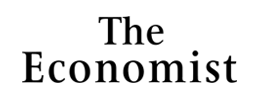Related


Maintaining mobility is an essential task for municipalities and urban planners. This is best done by allowing multimode transport systems to reflect consumer demand. Commuters should be able to choose among the various transport modes available those that best fit their commuting needs. New transport systems should adapt to evolving spatial structures of cities. Because pricing of emissions currently involves large transactions costs, governments should set pollution and GHG targets as a substitute for price—at least, until technology is available to directly charge for pollution emitted and GHGs released. The pricing of road space is also an important task. Flat tolls on roads should be progressively replaced by congestion pricing constantly adjusted to maintain a set speed on road segments. Eventually, individual commuter cars will have to be redesigned to reduce their road footprint and their weight. Emerging new “personal mobility vehicles”, such as the Toyota i-Road, illustrate the potential for replacing the traditional car while providing more mobility for less road space and less energy, pollution, and GHGs per km. Finally, the possibility to share small self-driving vehicles on demand could provide a very efficient alternative in the future for many suburb-to-suburb trips.
Please fill out the information below to receive our e-newsletter(s).
*Indicates required.